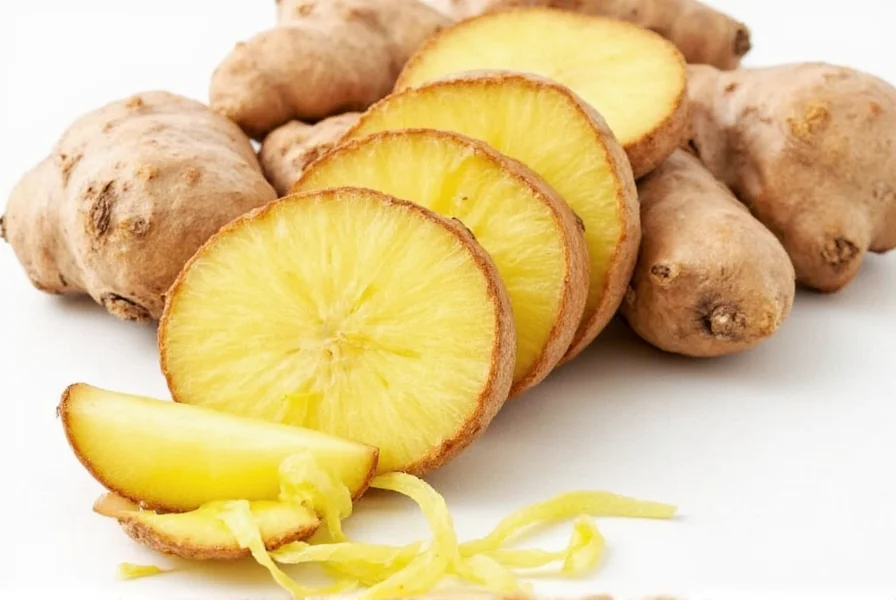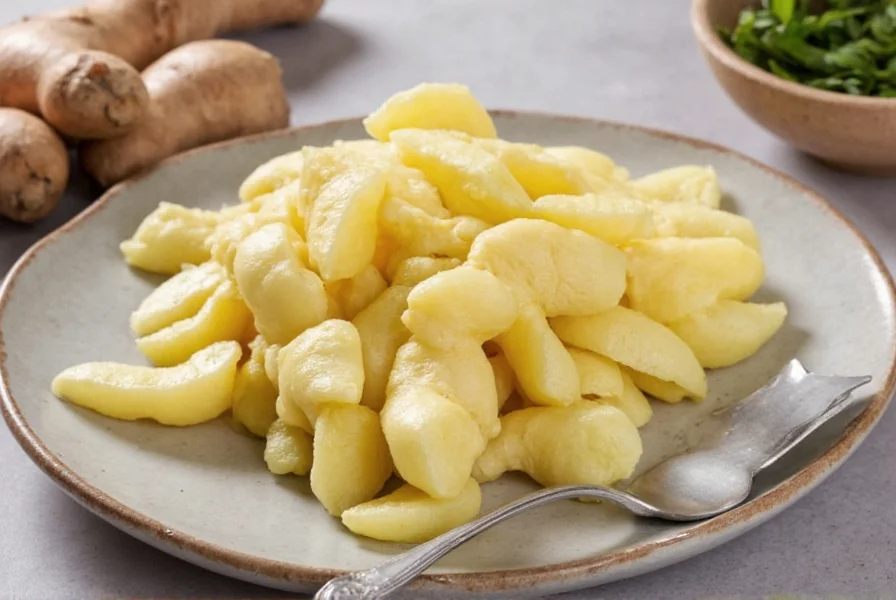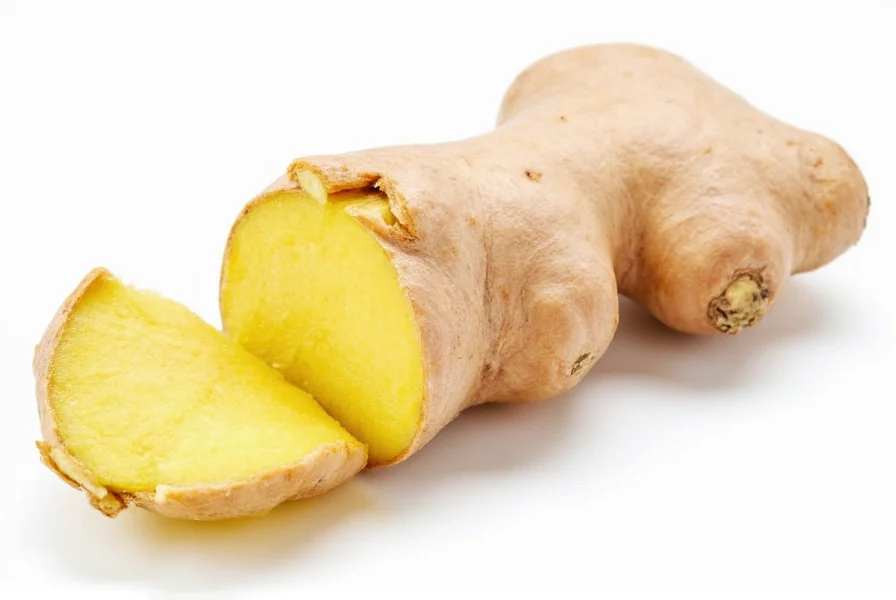Yes, ginger is considered low FODMAP according to Monash University's research, the leading authority on FODMAP science. The low FODMAP serving size is up to 2 tablespoons (50g) of fresh ginger root per meal. This makes ginger a safe option for most people following the elimination phase of the low FODMAP diet.
For individuals managing irritable bowel syndrome (IBS) or other digestive disorders, understanding which foods are low FODMAP is essential for symptom control. Ginger frequently appears in cooking and natural remedies, making its FODMAP status particularly relevant for those on this specialized diet.
Understanding FODMAPs and Digestive Health
FODMAP stands for Fermentable Oligosaccharides, Disaccharides, Monosaccharides, and Polyols—short-chain carbohydrates that some people struggle to digest. When these compounds reach the small intestine undigested, they can cause bloating, gas, abdominal pain, and other uncomfortable symptoms in sensitive individuals.
The low FODMAP diet, developed by researchers at Monash University, has become the gold standard dietary approach for managing IBS symptoms. This evidence-based protocol involves three phases: elimination, reintroduction, and personalization. During the initial elimination phase, high FODMAP foods are restricted to identify potential triggers.

Ginger's FODMAP Profile: What the Research Shows
Monash University's comprehensive testing has established that fresh ginger root is low FODMAP at specific serving sizes. Their research indicates:
| Ginger Type | Low FODMAP Serving Size | High FODMAP Threshold |
|---|---|---|
| Fresh Ginger Root | 50g (2 tbsp grated) | 75g or more |
| Ginger Powder | 1 tsp (2g) | 2 tsp or more |
| Ginger Tea (fresh) | 1 cup (250ml) | 2 cups or more |
| Pickled Ginger | 15g (1 tbsp) | 30g or more |
The testing methodology used by Monash involves precise chemical analysis to measure specific FODMAP compounds. Ginger contains minimal amounts of fructans and galacto-oligosaccharides (GOS), the primary FODMAPs of concern. This scientific approach provides reliable data for dietary planning.
Practical Guidance for Using Ginger on a Low FODMAP Diet
While ginger is low FODMAP within recommended portions, proper usage matters for optimal digestive comfort:
- Fresh ginger preparation: Grate or slice ginger root rather than juicing it, as juicing concentrates compounds. The 50g limit refers to the actual ginger used, not the final dish quantity.
- Ginger tea considerations: Steeping fresh ginger in hot water creates a low FODMAP beverage, but extended steeping times may increase FODMAP extraction.
- Ginger in cooking: When adding ginger to soups, stir-fries, or curries, remember that the entire amount used counts toward your serving limit, even if you don't consume every piece.
- Pickled ginger caution: The pickling process affects FODMAP content. Monash rates pickled ginger as low FODMAP only in smaller portions (15g) compared to fresh ginger.
Many people wonder is pickled ginger low fodmap for sushi meals. While small amounts served with sushi are generally acceptable, consuming multiple servings could exceed limits. Similarly, those searching can I eat ginger on low fodmap diet during the elimination phase can confidently include it within portion guidelines.
Ginger's Additional Benefits for Digestive Health
Beyond its low FODMAP status, ginger offers potential digestive benefits that make it particularly valuable for IBS management:
- Gingerol, the active compound in ginger, may help accelerate gastric emptying, reducing feelings of fullness and discomfort.
- Research suggests ginger possesses anti-inflammatory properties that could benefit gut health.
- Its natural anti-nausea effects provide relief for those experiencing digestive upset alongside IBS symptoms.
When exploring ginger tea low fodmap options, freshly prepared tea using measured amounts of ginger root remains the most reliable choice. Commercial ginger teas vary significantly in ginger content and may contain other high FODMAP ingredients.
Common Questions About Ginger and FODMAPs
Many individuals following the low FODMAP diet have specific questions about incorporating ginger safely. Understanding the monash university ginger fodmap rating helps address these concerns with evidence-based information.

Conclusion: Ginger as a Safe Flavor Enhancer
Ginger's low FODMAP status at appropriate serving sizes makes it a valuable ingredient for those managing digestive sensitivities. By adhering to the established portion guidelines—particularly the 50g limit for fresh ginger—you can enjoy its distinctive flavor and potential digestive benefits without triggering symptoms.
When planning meals, consider tracking your ginger consumption alongside other FODMAP sources to ensure you stay within your personal tolerance levels. As always, working with a registered dietitian specializing in the low FODMAP diet provides personalized guidance for your specific needs.
Is fresh ginger low FODMAP during the elimination phase?
Yes, fresh ginger root is low FODMAP during the elimination phase when consumed in amounts up to 50g (approximately 2 tablespoons grated) per sitting. This serving size has been scientifically tested by Monash University and confirmed to be low in FODMAPs.
How much ginger powder is low FODMAP?
The low FODMAP serving size for ginger powder is 1 teaspoon (approximately 2g). Consuming more than this amount may introduce sufficient FODMAPs to trigger symptoms in sensitive individuals. Always measure powdered ginger rather than estimating portions.
Is ginger tea safe on a low FODMAP diet?
Freshly prepared ginger tea using up to 50g of fresh ginger root steeped in 250ml of water is considered low FODMAP. However, extended steeping times (beyond 10 minutes) may increase FODMAP extraction. Commercial ginger teas vary in concentration and may contain other high FODMAP ingredients, so check labels carefully.
Can I eat pickled ginger on a low FODMAP diet?
Pickled ginger is low FODMAP in small portions of 15g (about 1 tablespoon). This is significantly less than the serving size for fresh ginger due to the pickling process. When eating sushi, the small amount typically served should be acceptable, but consuming larger portions may trigger symptoms.
Does ginger help with IBS symptoms beyond being low FODMAP?
Research suggests ginger may provide additional digestive benefits for IBS sufferers. Its active compound gingerol may accelerate gastric emptying and reduce nausea. Ginger also possesses anti-inflammatory properties that could benefit gut health. However, these benefits occur within the established low FODMAP serving sizes—consuming excessive amounts may trigger symptoms despite potential benefits.











 浙公网安备
33010002000092号
浙公网安备
33010002000092号 浙B2-20120091-4
浙B2-20120091-4